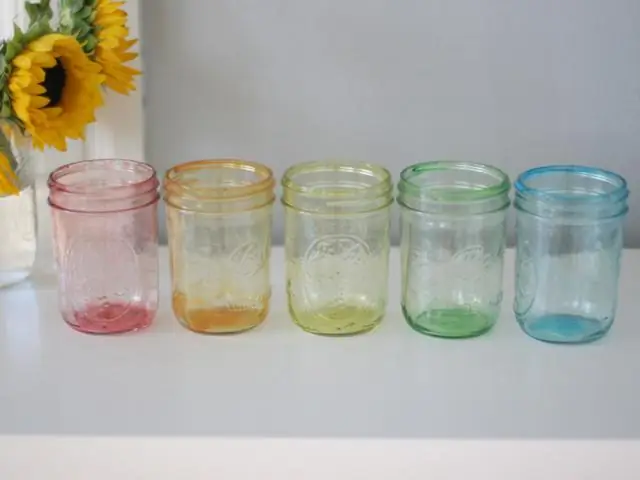
Table of contents:
- Author Bailey Albertson [email protected].
- Public 2023-12-17 12:53.
- Last modified 2025-06-01 07:32.
How to glue paper-backed vinyl wallpaper

Every home needs redecoration from time to time, and wallpapering is the most important part of it. The modern market offers a wide range of materials for every taste and wallet. For example, recently very popular vinyl wallpaper on a paper basis. They are quite inexpensive, but at the same time of high quality, reliable and very easy to maintain. But do we know how to glue them correctly so that they serve us as long as possible?
Content
- 1 What is paper backed vinyl wallpaper
- 2 Necessary tools and little secrets
-
3 Step by step description of work
- 3.1 Surface preparation
-
3.2 Preparing glue and wallpaper
3.2.1 Adhesive preparation and application - video
-
3.3 The process of wallpapering
3.3.1 Video about the features of gluing the first canvas
- 3.4 Pasting the ceiling
What is paper backed vinyl wallpaper

A huge range of colors, patterns and textures will help you create an unusual interior design using vinyl wallpaper
The peculiarity of paper-based vinyl wallpaper is that its bottom layer is made of paper. This determines the low cost of the product. For example, wallpaper with a non-woven base will cost more, although the top layer consists of the same polyvinyl chloride.
It is this material, polyvinyl chloride, that makes vinyl wallpaper so versatile. It is very resistant to dirt and mechanical stress, and its elasticity allows you to recreate a variety of textures and patterns. You can not only wash such wallpapers, but even paint them, which will greatly simplify the repair work and the cost of them.
But not everything is perfect, unfortunately. For example, the paper base has some disadvantages compared to non-woven fabric:
- less strength;
- paper may stretch slightly, absorbing glue;
- the process of gluing wallpaper on a paper basis is not so simple and convenient.
How much these shortcomings are perceptible, each buyer is free to decide for himself. Most often, a low price is a decisive factor, especially since such disadvantages are not very noticeable against its background. This is evidenced by the high demand for paper-backed vinyl wallpaper.
When choosing wallpapers of this type, pay attention to their classification. According to the surface structure, they are divided into smooth and embossed, and according to the method of finishing, they can be embossed or profiled. Thus, vinyl wallpapers are divided into several types.
-
Silk-screen printing is a very popular wallpaper, light, durable and beautiful. The thin and smooth texture is reminiscent of silk fabric. They are made by applying a layer of polyvinyl chloride to the paper base, which is hot stamped.

Silkscreen wallpaper An example of silk-screened vinyl wallpaper
-
Compact vinyl is slightly heavier than silk-screened wallpaper. Most often, these wallpapers imitate natural fabrics, stone or plaster.

Compact vinyl wallpaper Paper backed compact vinyl wallpaper
-
Heavy duty vinyl with a thick top coat. Very durable, has a relief surface. It can have a pattern imitating crinkled leather or three-dimensional embroidery. This type of wallpaper hides unevenness on the walls well.

Heavy vinyl Heavy-duty vinyl wallpaper with a thick top layer
-
Chemical embossed wallpaper. Their undoubted advantage is their high strength and resistance to moisture, chemicals and sunlight, that is, you can easily wash them and not be afraid that the coating will fade in the sun.

Chemical Embossed Vinyl Wallpaper Example of chemically embossed vinyl wallpaper
Necessary tools and little secrets
In the process of wallpapering, you may encounter certain difficulties. Invite one of your friends to help you: work will go faster, easier and more fun.
To work, you need the following tools:
- a fur roller or brush for applying glue to the wall and wallpaper;
- rubber roller for processing seams;
- measuring tape;
- construction plumb line (level);
- scissors or knife;
- cotton cloth to remove excess glue;
- paper tape.
In addition, you need the wallpaper and glue yourself. Approach his choice thoroughly: the use of non-woven glue for wallpaper with a paper backing is strongly discouraged. Better use glue labeled Universal, Vinyl or Express.

Choose a special glue for your type of wallpaper and follow the instructions on the package
Make sure that the adhesive contains antifungal additives. If your wallpaper is very heavy, it is better to choose a special glue.
Before gluing the wallpaper, you need to make sure that the surface is dry. It's easy to check: stick a small piece of plastic wrap on the wall and leave it until morning. If condensation has settled on the film overnight, the wall is still not dry enough. You can also stick on regular tape, peel it off sharply, and look at the sticky side. A properly prepared and dried wall will not leave its pieces on the glue layer.
Step by step description of work
This process has a lot of subtleties. You will have to face joints, gluing in the corners, and even finishing the ceiling will require some effort from you. But you will surely cope with all these troubles.
Surface preparation
-
It is not necessary to glue the new wallpaper on the old: over time, both layers may fall off. Remove the old finish from the wall and fix the defects. Don't rely on vinyl wallpaper to be opaque and will perfectly hide any stains on the walls. It is better to achieve a completely monochromatic coverage.

Removing old wallpaper Be sure to remove old wallpaper from the wall.
-
If defects are found on the wall (cracks, potholes, irregularities), seal them with putty. Then prime the surface. This can be done with diluted wallpaper glue, or even better - with a special deep penetration primer with an antifungal composition.

Wall priming Fill any irregularities and prime the walls
- Be sure to de-energize the area and remove switches and sockets from the walls. Electric shocks are not a pleasant addition to the workflow.
- Wait until the walls are completely dry, and beat off a vertical line with a level: it will become a guide when gluing the first sheet.
Preparing glue and wallpaper
-
Cut the roll immediately into pieces of the required length. To do this, use a tape measure and measure the height of the walls. If the wallpaper has an embossed pattern or a rapport pattern (repeating areas), be sure to consider the need for alignment at the joints. Number the cut pieces of wallpaper so as not to confuse them during the gluing process.

Preparing vinyl wallpaper for gluing Cut a roll of wallpaper into sheets of the required length, coat them with glue and let them soak
- When preparing the adhesive, carefully follow the instructions on the package. You also need to consider the type of wallpaper you have in order to choose the right ratio of dry glue to water.
-
After the glue has been applied, fold the sheet with the smeared side inward and leave for a few minutes for the wallpaper to soak well.

Wallpaper with glue applied Leave the sheets in this position for a few minutes.
Glue preparation and application - video
Wallpaper pasting process
It is at this stage that you need an assistant. It is much more convenient if one person cuts and prepares the wallpaper, and the other sticks the canvases on the wall on a stepladder.
-
Gently press the cloth against the base of the wall, roll it over it well to expel the air. Move the roller from the center towards the edges and from top to bottom. Remove excess adhesive immediately with a cotton rag.

Pasting wallpaper on the wall Press the wallpaper carefully against the wall with a roller, remove excess glue with a clean cloth
- After the wallpaper sheets have been glued, allowances may remain on the top and bottom edges. They need to be cut with a sharp blade or a well-sharpened knife. It is better to do this after the wallpaper is well dry: the wet surface is "chewed" and may tear.
-
If you did not have the opportunity to remove the skirting boards before work, the canvas must be carefully trimmed at the upper edge. But it is still much easier to work if the skirting board is previously removed.

Aligning the wallpaper to the baseboard If you have not removed the skirting boards before work, be careful with excess wallpaper
- In order not to smear the ceiling surface with glue, wrap the wallpaper 5 cm at the top. The sheet will not completely reach the ceiling line, and later you will glue this area, helping yourself with a narrow brush.
- Apply the rest of the wallpaper in the same way.
Do not forget that paper-based vinyl wallpaper after gluing must dry for at least 2 days. All this time, the room should be maintained at an optimal temperature (from 15 to 20 degrees Celsius) and there should be no drafts. Violation of these conditions can lead to the appearance of bubbles on the surface of the wallpaper.
You may find it difficult to apply vinyl wallpaper in corners. There are two common ways to deal with this problem:
-
You can glue the wallpaper with an overlap, but this method is applicable if it is plain or with a small and inconspicuous pattern. Fold the cloth about 1 cm over the adjacent wall and cover the overlap with the adjacent sheet.

Pasting wallpaper in corners Pasting vinyl wallpaper in corners
-
The second method is more time consuming, but the result is an ideal angle without overlaps.
- Start work in the same way as in the first method, but leave a larger allowance - 2-3 cm.
- When the canvases are dry, cut two sheets vertically at once with a clerical knife. Use a metal ruler for this: along it you can easily and evenly cut the wallpaper into 2 layers.
-
Remove the cut parts, bend the edges of the canvases, apply glue and roll with a roller. You will get a perfectly even layer, indistinguishable from the factory one.

Cutting off excess overlap A way of gluing the corner with a deeper overlap will allow you to achieve the perfect result
Video about the features of gluing the first canvas
We paste over the ceiling

To stick vinyl wallpaper on the ceiling, you will definitely need an assistant
Paper-based vinyl wallpaper is a great idea for covering the ceiling: due to its lightness, it adheres well to the surface.
The process of gluing wallpaper on the ceiling is practically no different from a similar wall decoration. Unless your hands get tired much more, and you have to take frequent breaks. Nevertheless, you need to beat off the starting line along the wall in order to subsequently align the first wallpaper canvas along it.
If you first covered the walls with vinyl wallpaper, and then proceeded to the ceiling, it is very important not to stain the already finished work with glue. To do this, the walls from above can be sealed with cling film or newspapers can be fixed on them with masking tape. After finishing work, you can easily remove this protection without leaving any traces.
We hope that our tips and tricks will help you easily cope with the gluing of paper-based vinyl wallpaper yourself, without the help of repair specialists. If you have any questions about this topic, please ask them in the comments. There you can share your experience or leave comments and advice. Good luck and easy work!
Recommended:
How To Remove Greasy Stains From Paper And Various Paper Surfaces At Home + Photos And Videos
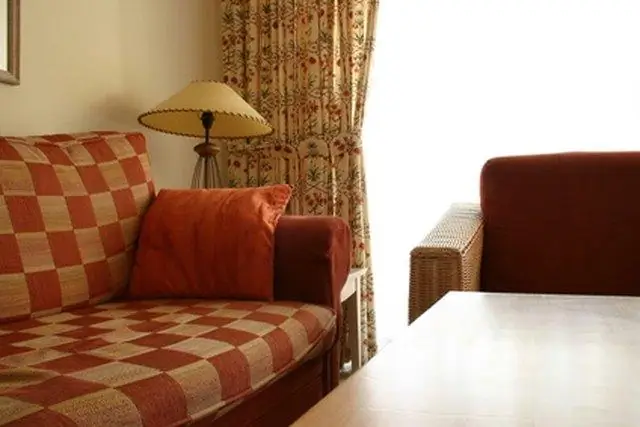
How to properly remove a greasy stain from paper: with and without text, descriptions of the most effective methods using chemistry and folk remedies
How To Hang A Painting On A Wall Without Nails: Tape, Paper Clip, Glue, Spider Hook And Other Options
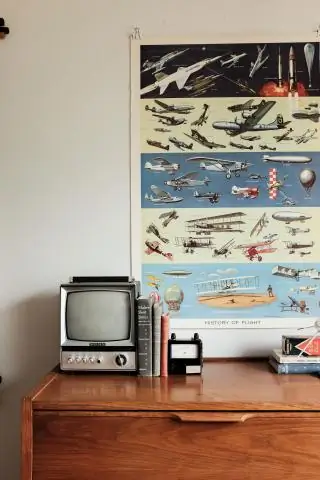
Step-by-step descriptions of how to attach paintings to walls without nails. Use of improvised means, special devices, original ideas
Vinyl Wallpaper For The Kitchen: Features, Advantages And Disadvantages, Interior Design, Photo
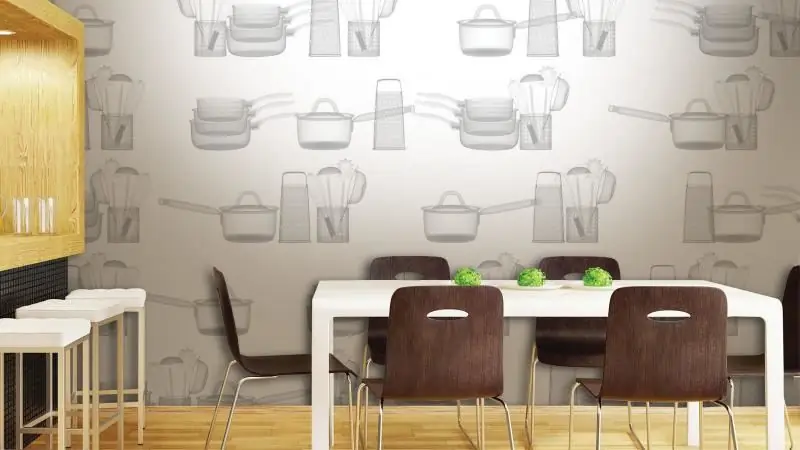
Features and selection of vinyl wallpaper for the kitchen. How to properly glue the wallpaper and take care of the coating in the kitchen. Wall decor options with vinyl wallpaper
A Simple Way To Redecorate The Ceiling: How To Properly Glue The Ceiling Tiles, Step-by-step Recommendations + Photos And Videos
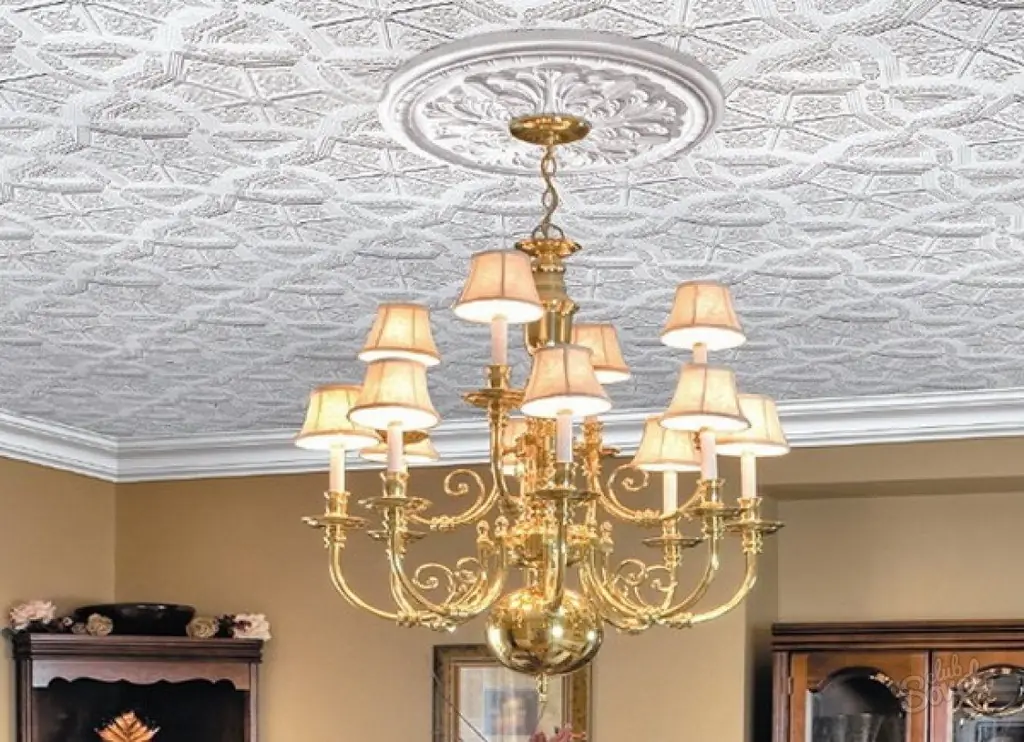
Practical advice on ceiling renovation with ceiling tiles. How to choose the right tile, glue. Tile installation methods
How To Glue Wallpaper With Your Own Hands Correctly And Beautifully - A Step-by-step Master Class With Photos And Videos
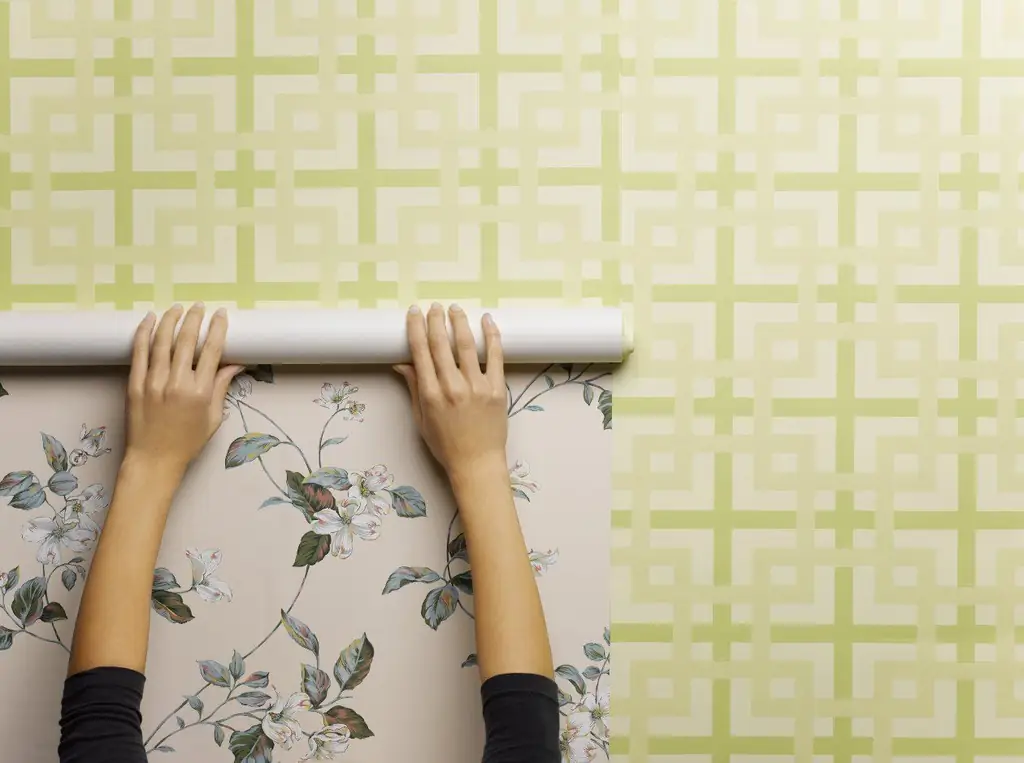
We correctly glue the wallpaper on the wall on our own. How to glue wallpaper of any kind in the corners of a room. Detailed process description with step-by-step photos and videos
